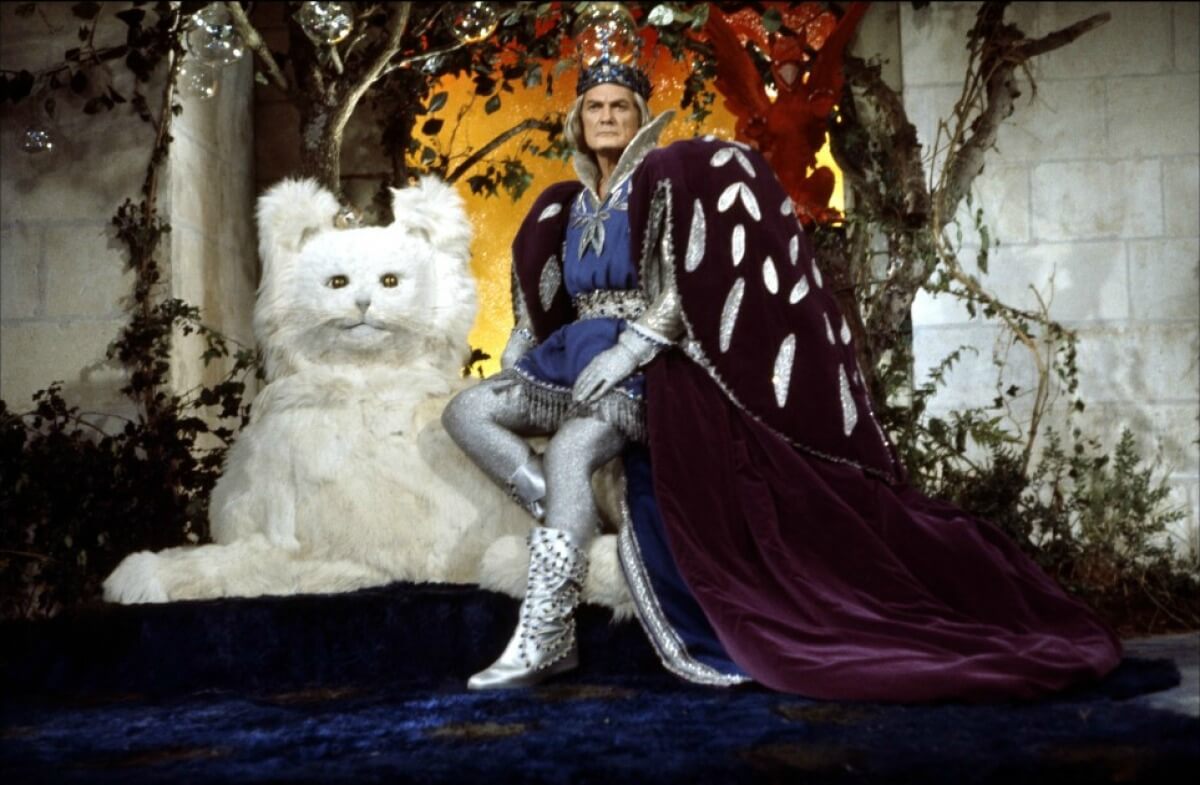
“Our tale is perhaps difficult to believe, but as long as there are children, and mothers and grandmothers, it will live on in memory,” states the narrator of director Jacques Demy’s 1970 French romantic musical, Donkey Skin. With this forewarning in mind, what exactly makes a story memorable enough to traverse through generations of bedtime rituals and illicit the same spark of childlike imagination? Is it the promise of true love’s kiss? The inevitable dragon destined to be vanquished by a prince’s blade? The comfortable reliability of ‘happily ever after’? Or is it all of these pictures rooted deeply in our thoughts, bursting with light and colorful possibility? For centuries, fairytales have been told to the young as a means of instilling the thinly veiled values and lessons hidden in the stories of magical creatures and virtuous maidens. This subliminal coercion of storybooks is very similar to the communication of media aesthetics in a feature film, as both attempt to manipulate the reactions and messages each medium’s audience takes away from the artistic work. Transposing a classic fairytale from book to film without losing any of its whimsical nuances is a task achieved by Donkey Skin through its impeccable use of color from scene to scene. Just like flipping through the pages of a lavishly illustrated manuscript, the motion picture entices the eyes with splashes of colorful imagery to fully encapsulate the fantastical elements of the plot and mirror the artistic flair of vintage fairytale treasuries. In order to clarify and intensify the film’s dreamlike atmosphere, Donkey Skin utilizes the main functions of color for informational, compositional, and expressive purposes.
Initially, Donkey Skin relies on the informational properties of color to reveal more about the circumstances that take place in the movie and to interpret them in a real-world context. The informational function of color is defined as telling the audience more about an event than would be possible without color, to help us distinguish among things, and to use specifically designed color codes. Consequently, one of the beginning plot points of the film involves a king trying to convince his daughter to marry him, but the princess sets forth several requests before she can accept his proposal, including making her a dress the color of the weather. It is specified that she wants the dress to be modeled after “good weather,” and even with that specification, what colors connote good weather? If Donkey Skin was rendered in black-and-white, the scene where an elaborately decorated teal gown is presented to the princess would not be communicated as effectively than seeing the actual color in all of its saturated glory. In technicolor, the hues of a “good weather” dress resemble a bright, cloudless springtime sky, while in a black-and-white film, this information would be completely lost to the viewer. Once the king complies with her request, the princess then insists that he makes her a dress the color of the moon. The audience’s perception of the moon’s color is based on our real-life visual references, of seeing the pale illumination of the moon contrast against the black of night. In turn, the dress that the king brings to the princess is sparkling silver with white orbs positioned haphazardly. The final dress that the princesses orders from the king is the color of the sun. Warm and golden are words synonymous with the sun’s color palette, so the dress revealed to the princess is a decadent gold gown that shimmers in every angle of the frame, as the sun would do when reflecting light. By employing the informational property of color in these dress scenes, Donkey Skin gives an artistic interpretation of nature and celestial bodies in a context relatable to viewers that would not be as clearly communicated if the film were in black-and-white.
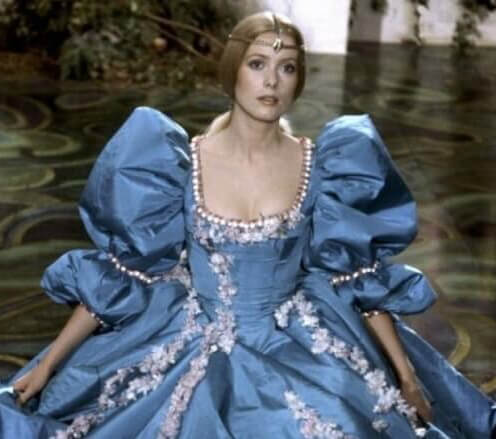
The color of the weather
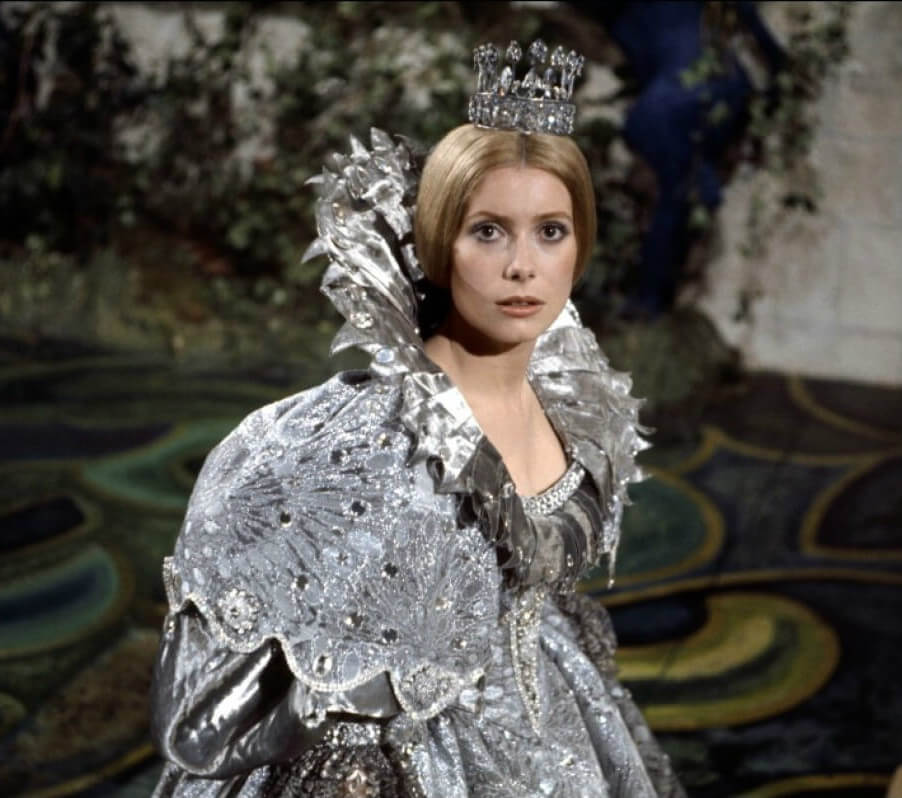
The color of the moon
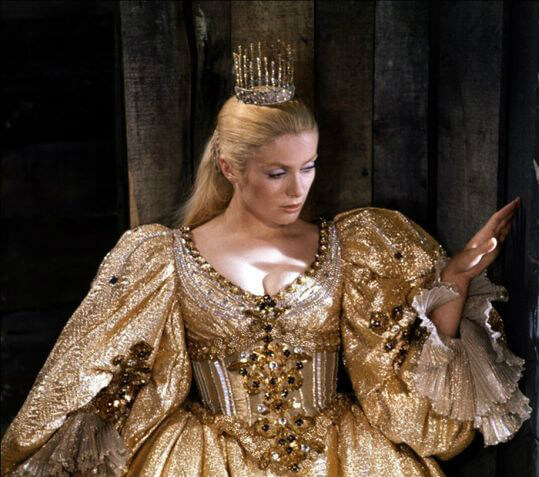
The color of the sun
Additionally, the compositional function of color is heavily featured in this fairytale film as a means of defining certain areas of the screen with colors that harmonize well together. Colors harmonize best when they are next to each other on the hue circle, on opposite sides of the hue circle, or on the tips of an equilateral triangle superimposed on the hue circle. Donkey Skin expertly abides by these rules, most notably presented between the two kingdoms of the prince and princess who form a romantic connection. The princess’s kingdom has a deeply saturated color palette of predominantly blue shades—from the color of the castle walls to the color of the horses. Even the coachmen and castle attendants are painted and dressed head-to-toe in a vibrant indigo hue.
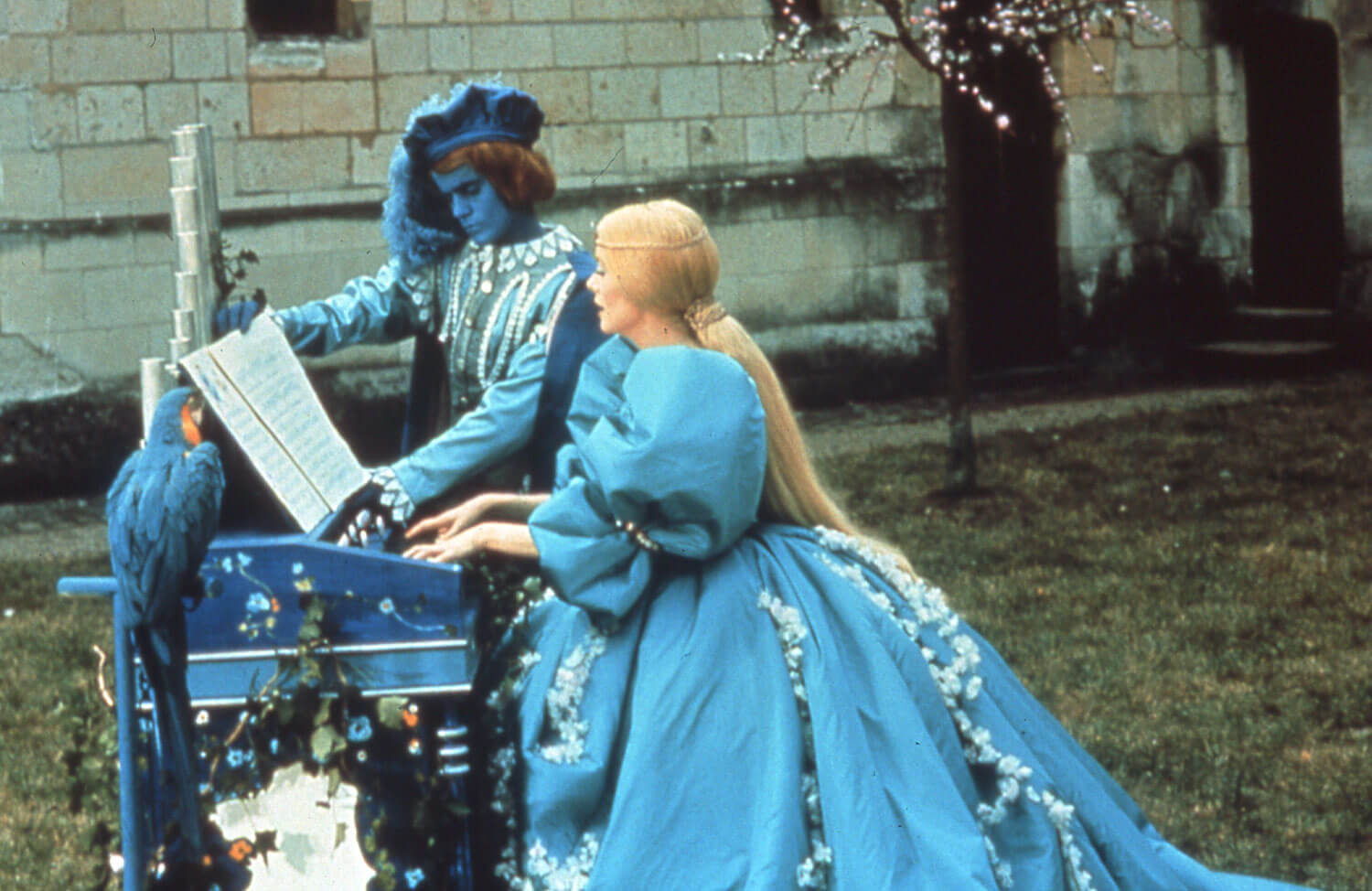
The same accommodations can be said for the prince’s kingdom, except red is the color of interest. Another point of significance lies in the objects the two members of royalty interact with before meeting each other. While wearing a skinned donkey to hide from her father, the princess passes a tree in the woods, where a blue parrot from her castle croons French love songs above her. Similarly, the prince, adorned in red clothing, happens across a talking red rose in the same forest who tells him that his true love awaits him down the road. Perhaps not coincidentally, blue and red are positioned directly across from each other on the hue circle, making them harmonious to each other.
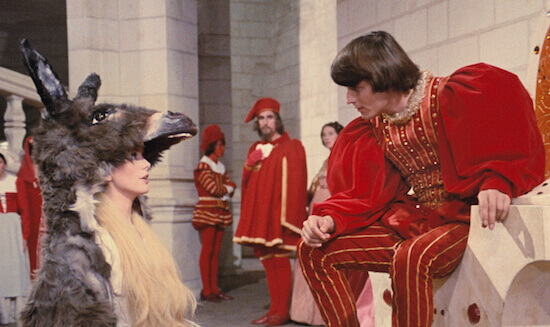
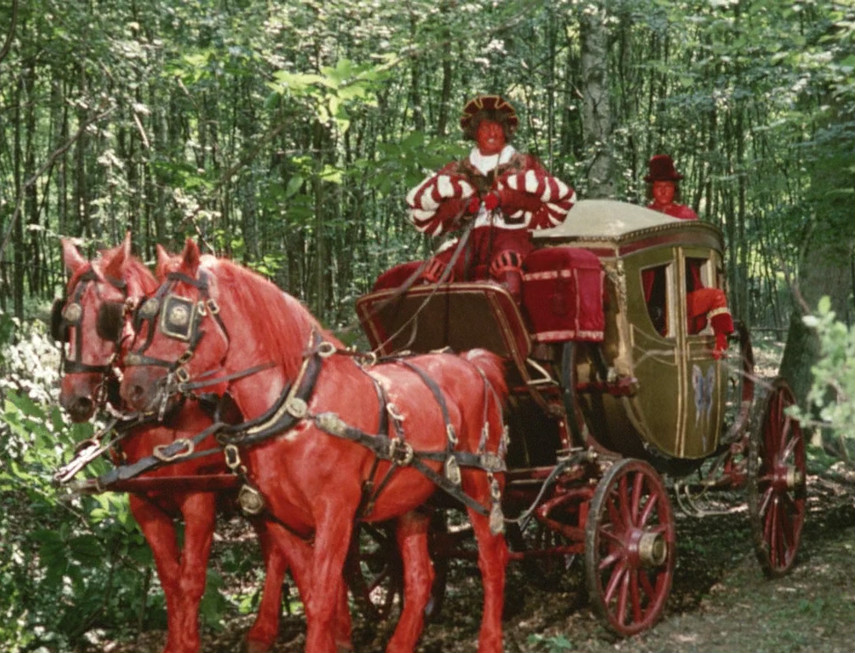
This emphasis on the compositional function of color is utilized in the wedding scene of the prince and princess, where the stark white clothing and foreground pieces are contrasted by splashes of purple—signifying the union of blue and red. By incorporating these harmonizing colors in Donkey Skin, the film maintains its whimsical aesthetic while also intensifying certain aspects of the screen to attract the audience’s attention.
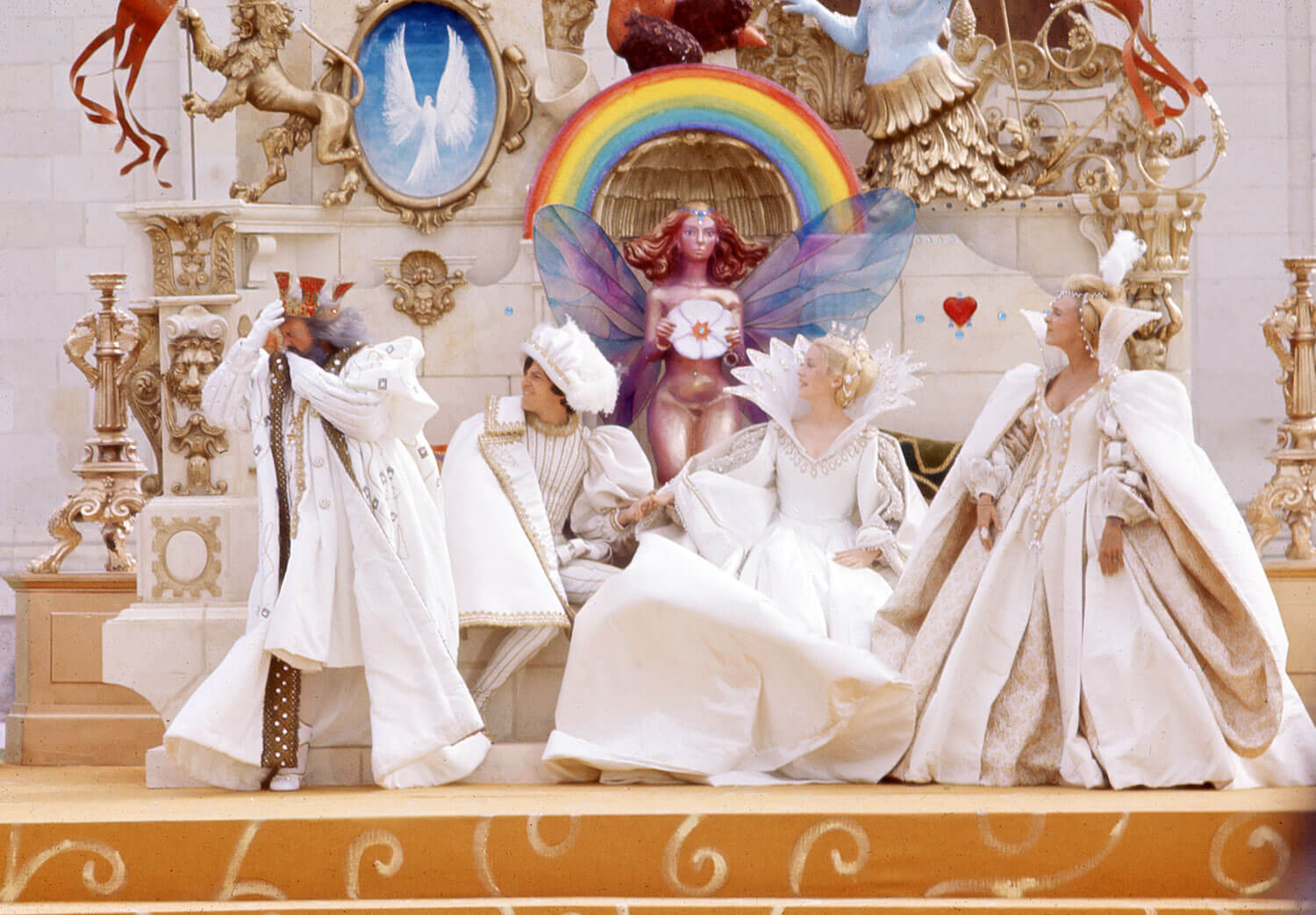
Finally, the expressive properties of color applied in the film heighten the overall mood and emotional reactions of the viewer—contributing to the ethereal aesthetic edge of Donkey Skin. The defined purpose of the expressive function of color is to make us feel a specific way: colors can express the essential quality of an object or event, add excitement and drama, and help establish a mood. From the opening scene of the movie, a kaleidoscope of color rains down on the eyes of the viewer, as the painted pages of a storybook come to life in a Disney-esque fashion, revealing the idyllic visage of the princess’s castle. The blue exterior is serene and tranquil, as it naturally blends with the surrounding lake and vivid morning sky. The castle grounds are adorned with flourishes of flowering plants, and phantasmagoric shades of spring envelop the screen, complete with the image of the aforementioned princess sitting at her blue piano with brilliant blonde hair radiating like sunshine. The blue-and-yellow parrot at her side and indigo servant provide a surreal image, one of intrigue and hypnotism. The mood attached to the bright colors of the film create an emotional stirring of happiness and cheer to the audience, communicating the idea of a seemingly perfect fairytale world into associative images.
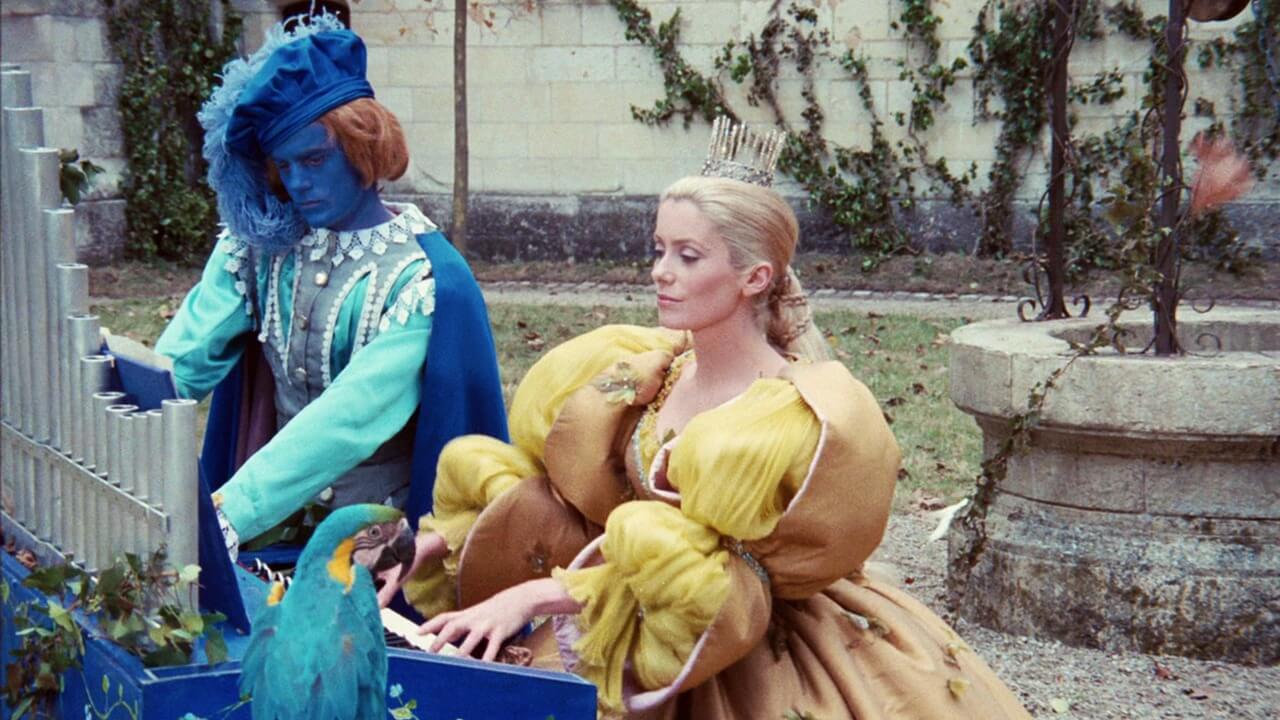
In contrast, the vivid hues all but vanish once the princess goes into hiding disguised as a scullery maid named Donkey Skin at a farm. The color palette of these scenes are very muted and dull, mirroring the princess’s situation in that she must conceal her true beauty for the sake of remaining undetected by her romantically-confused father. The only spark of illumination comes from the princess’s magic wand given to her by her fairy godmother, which allows her to carry her belongings with her and change into her dress the color of the sun. She even performs some of her chores in her royal adornment—juxtaposing the bleak atmosphere with a surge of golden radiance. Donkey Skin employs the expressive function of color to manipulate the emotional reaction of the audience during certain points in the film and to maintain the magical qualities of its aesthetic edge.
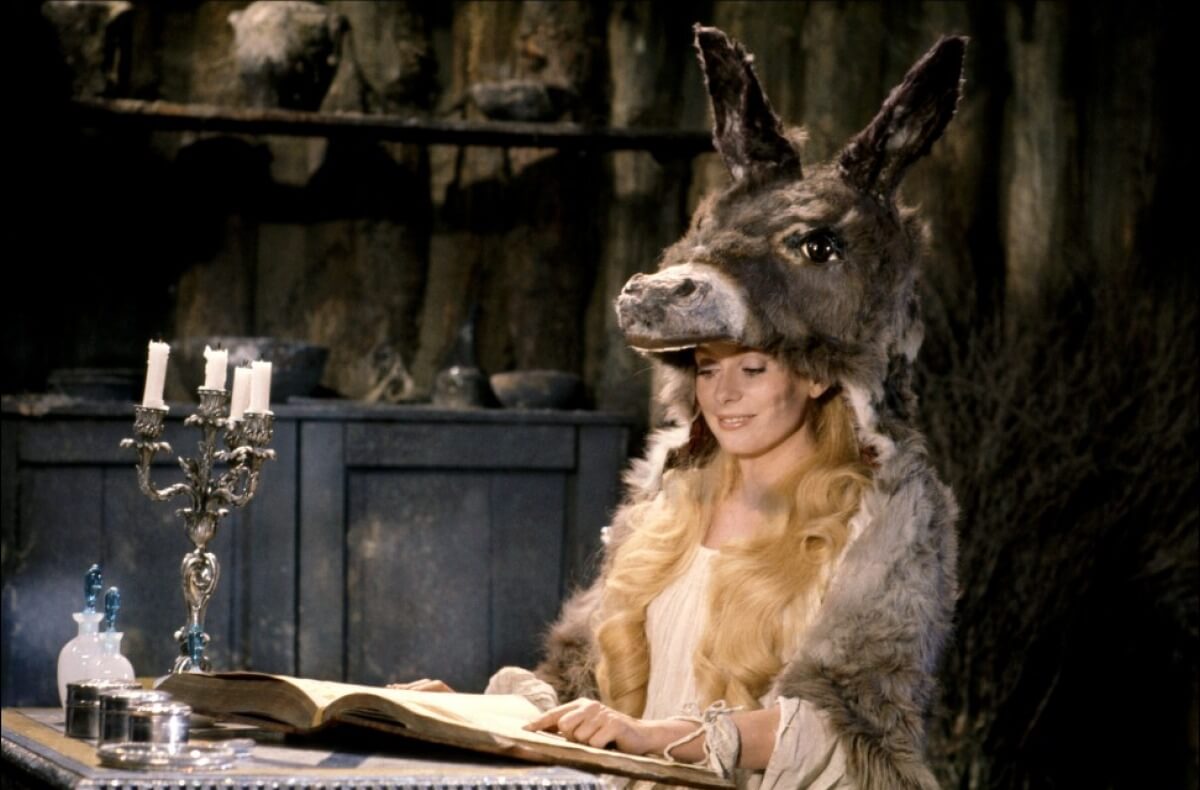
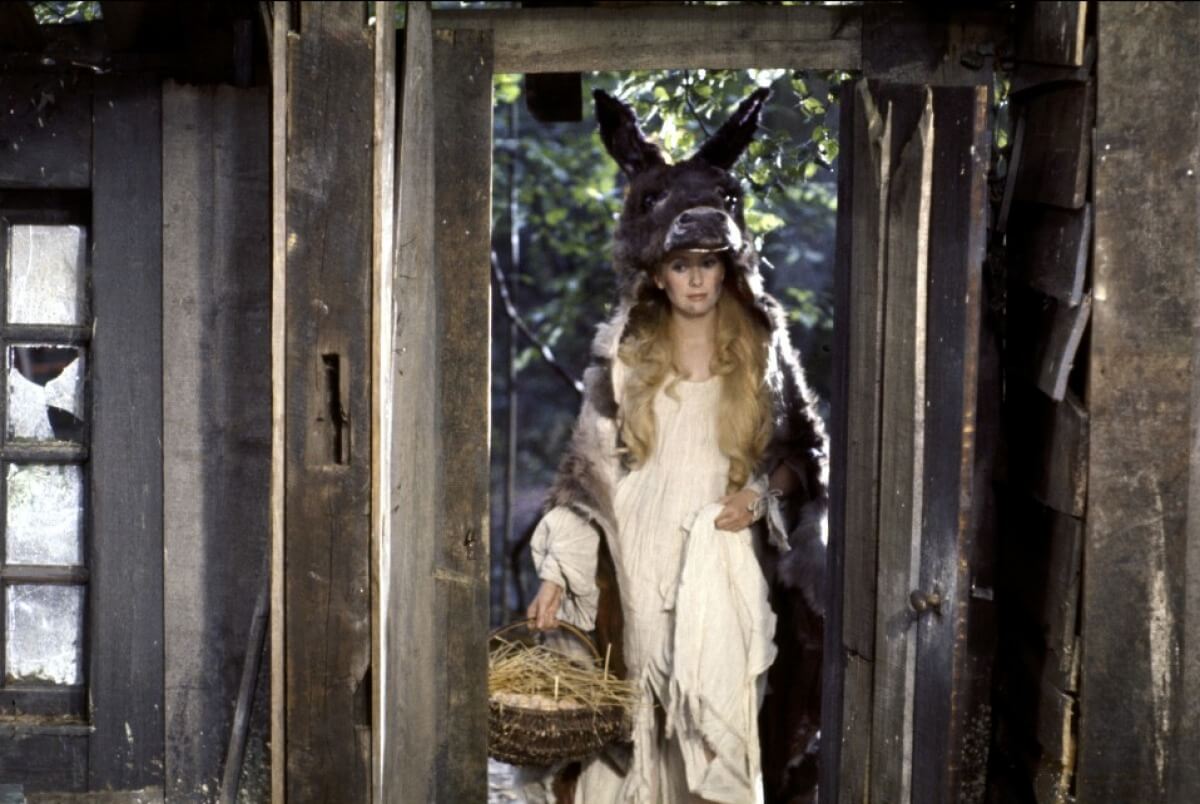
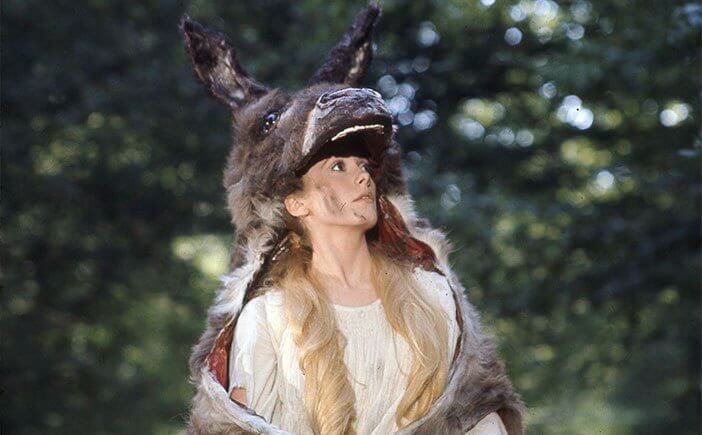
With the bold-faced, cursive lettering “The End” neatly spelled out on the page, a story comes to a close, and can only continue in the minds of those who read it. Donkey Skin embraces the main functions of color to fully ingrain itself in the viewers’ fields of perception - encompassing the informational, compositional, and expressive properties of color to clarify more of the plot, intensify certain aspects of the frame, and illicit emotional responses from the audience, respectively. It is often said that art imitates life, but in the case of Donkey Skin, the film bursts with emblazoned intensity to resemble a lucid dream than an actual experience based in reality. Jacques Demy captures the vision of a world picturesque and brimming with foreign spectacle with the applied media aesthetics used in his film. Is it then possible to touch upon the human experience with a story and setting that surpasses any sense of familiarity? The answer is revealed in the art of storytelling itself; whether it be through film, books, or oral communication, the very nature of humanity is to formulate grandiose ideas and search for a fulfilling purpose in life. With the medium of film, the dreams of the audience are immortalized forever on a large screen, tinged with the passionate colors of a princess’s tale some may have heard before, but most have probably never witnessed blossom with such a vibrant vitality.
Watch Donkey Skin